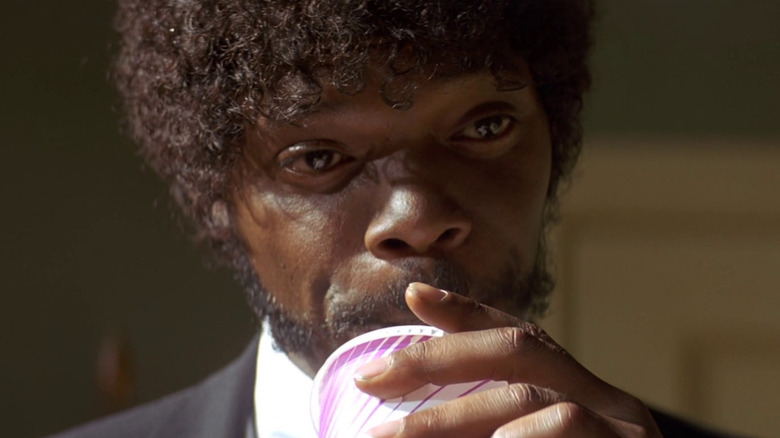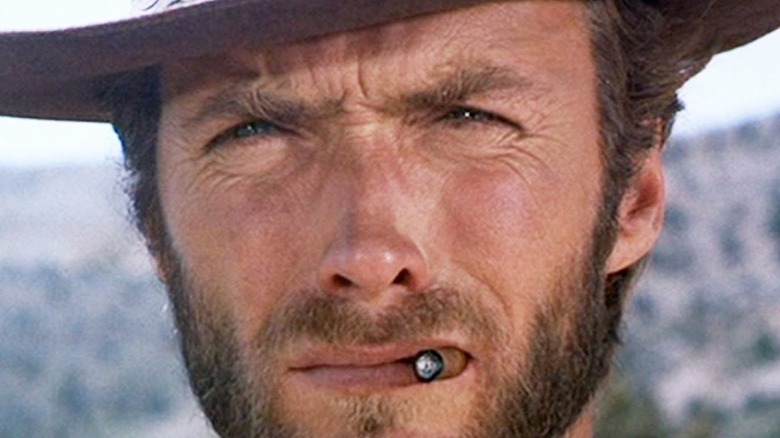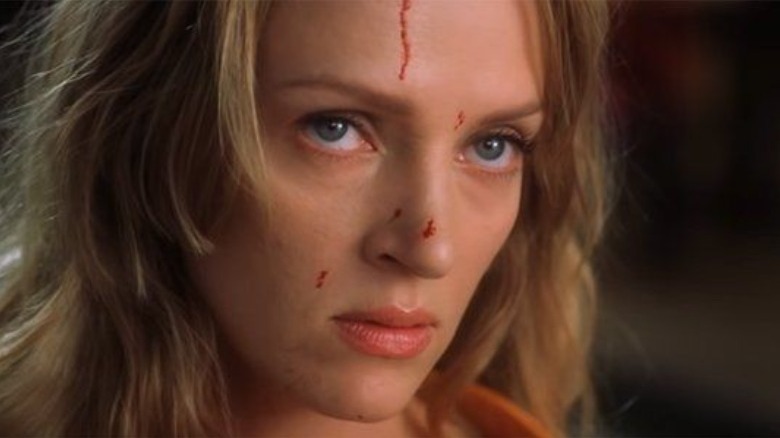One Of Quentin Tarantino's Favorite Camera Tricks Came Straight From Sergio Leone
It's difficult to pinpoint which filmmaker most influenced the modern close-up shot, but if there's one individual to single out, there's a strong case for Sergio Leone. Granddaddy of the Spaghetti Western, Leone inspired directors far outside the genre with his incredibly dramatic extreme close-ups, often utilized in situations before revolvers fired a hail of bullets. The style is near and dear to Quentin Tarantino, who has repeatedly paid homage to Leone throughout his own filmography.
Close-ups have been a part of movies since the early days of cinema, but Leone's take on the tradition added a new dimension of theatrics to this type of shot. His close-ups are hyper-focused on the subject's eyes, showing his characters squinting in the desert sun and sweating from the heat. Wide shots of sweeping landscape vistas often juxtaposed these cinematic portraits, creating an epic feel that help his Spaghetti Westerns eclipse their low-budget background to become part of classic cinema.
Perhaps no scene better represents Leone's style than the grand finale of "The Good, the Bad, and the Ugly," in which the three main characters in the film stand off against each other in a circle. In a shot that Tarantino cites is his favorite, the camera surveys the entire scale of the arena before moving closer and closer to their faces with each cut.
Closing in on close-ups
Tarantino has an almost religious respect for Leone, stating that the Italian filmmaker's work showed him how an auterist director can control a film and inspired him to make movies. Every entry in Tarantino's filmography has a degree of Leone flavoring to it, from the Mexican stand-off at the end of "Reservoir Dogs" to the title of "Once Upon a Time... in Hollywood" (a reference to Leone's own "Once Upon a Time in the West"). Tarantino utilizes the Leone close-ups because of the way they enhance the suspense of action scenes, but also because they're an effective characterization technique. While Leone often strayed away from heavy dialogue (both at Clint Eastwood's request and because of the tricky multi-lingual aspect of the production), Tarantino ironically utilizes the same type of close-up to supplement his exposition-heavy sequences.
In an American Cinematographer magazine profile, Tarantino specifically identifies them as:
"...tight close-ups in which the top of the frame ends on the actors' foreheads and the bottom of the frame ends on the bottom of their chins. It's a very strong choice to shoot them like that since we used actors who have cool-looking faces. This cuts together well, especially in certain dialogue scenes, because their faces hold the screen."
Close examples
The Leone close-up lends Tarantino's pictures an epic Western quality, no matter their actual genre. Perhaps the most traditional use of the technique occurs in the climactic sword duel of "Kill Bill: Vol. 1," which plays out like the ending of "The Good, the Bad, and the Ugly," substituting katanas for revolvers and a snowy night for the hot, sandy afternoon. The shot in which the top of O-Ren Ishii's skull falls off is, in fact, the exact aforementioned forehead-to-chin framing, this time used to macabre effect. The famous citation of the Book of Ezekiel in "Pulp Fiction" includes a Leone close-up of Jules' face before he fires his gun, another ode to the Spaghetti Western. "Inglorious Basterds" uses close-ups to ramp up suspense in both its opening scene and before the explosive climax, and "Django Unchained" itself is Tarantino's most overt Spaghetti Western, complete with Leone close-ups during the gunslinging.
Critics initially dismissed Sergio Leone and the Spaghetti Western as cheap and violent, but the genre and its most closely associated director have risen above their original reputations throughout the decades to influence Hollywood's most acclaimed artists. Quentin Tarantino is one of those who helped prove why Leone's style was much more than just exploitation.


